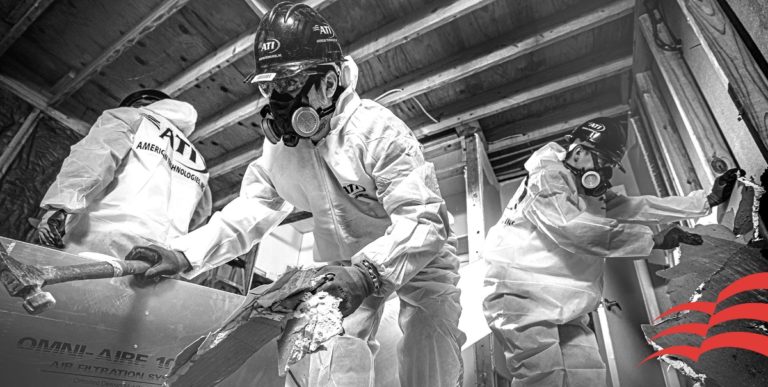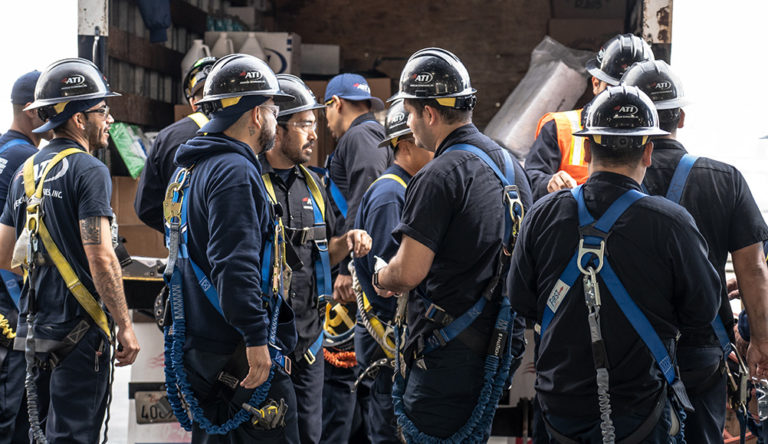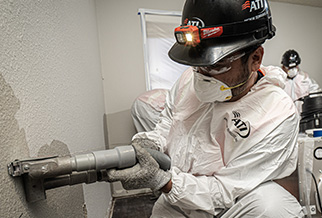
When a disaster strikes, the main goal is to get a business back up and running as quickly as possible. But it’s hard to plan for the unthinkable in advance. When trying to make decisions in the urgency of the aftermath, how can businesses find a disaster recovery partner they can trust to get back to business as usual?
The key to business continuity is to find a quality emergency services provider that understands how to prevent major issues and prepare businesses for the unexpected. A provider should strive to exceed expectations from the start of the project through to the finished product, complying with the contract, scope of work, and applicable laws and safety rules.
But how can businesses distinguish between providers who all claim that they’re going to do the best work? Before a disaster strikes, businesses should spend some time vetting providers, so they aren’t left scrambling.
Ten key aspects of quality set restoration service providers apart.

What is self-performance? It’s an organization’s ability to handle projects without subcontracting out the scope of work. Small franchises and “mom and pop” shops aren’t staffed to handle a surge in demand, especially if a disaster affects multiple customers at the same time within the same region. An organization that lacks the experience in handling large jobs can’t guarantee that they’ll find workers with the necessary qualifications and training. As a result, work may not be up to quality standards or completed on time.
A large disaster recovery services provider with experience in managing catastrophe response has a stable of experienced, trained technicians on call—both inside and outside the impact zone. That means that they can work around the clock to get businesses back to where they want to be faster and more effectively than smaller providers.

McDonald’s is set up so that a Big Mac will taste the same in every location. But the same can’t be said of national disaster services franchises. In a franchise model, it’s much easier to standardize a product than a service, because a product is a process that’s easily transferable, while a service relies on human behavior. Some national providers that rely on local franchises lose control over how the work is performed, so they can’t control its quality or the outcome. Consistency matters in disaster response; businesses want the same results on every project, no matter where an emergency occurs. Look for an organization that has local representation with central management to ensure a high level of service and quality.

Many disaster recovery providers claim that their communication is a strength, but then they fall short of expectations. If a business calls a national disaster recovery provider and is transferred to a local franchise, it may notice a disconnect. Most franchised organizations don’t have a feedback loop to ensure quality communication. If the franchise doesn’t follow up proactively about the status of the work, that’s a red flag. Quality providers offer updates on the status of the work, budget, and timeline for completion. For example, at ATI, every project companywide is assigned a dedicated project director who is responsible for communicating until the work is complete.

No two disasters are alike, so every emergency requires a custom approach and scope of work. When providers try to stick to the same protocol for every project, it’s like trying to fit a square peg in a round hole. The mismatch between the provider’s plans and the customer’s needs leads to delays, higher costs, and even safety risks. A high-quality disaster recovery services provider delivers a unique solution tailored to the job and business needs.


Technology, including geospatial scanning, the use of drones, and interactive models, can help expedite the restoration process by eliminating the need for multiple manual inspections, paperwork, and the margin of error due to human error. Before disaster strikes, the use of technology can assist in documenting the baseline for any future restoration needs and can potentially help evaluate potential risks. Afterward, tools like geospatial technology and satellite imagery can help assess the damage, reduce claim cycle time, and improve claim accuracy. Look for a provider that’s capable of using these tools to get the best possible results.

High-quality providers demonstrate their commitment to safety in two ways. First, they’ll provide extensive training to their employees, including instruction on personal protective equipment as well as hazard identification and remediation. They’ll provide courses that address risks on job-specific duties, such as hazardous materials, asbestos, and mold. Second, they’ll have a track record of performing work safely.

It’s easy to understand why they do it: some disaster recovery companies cut corners to save time and make an easy buck. But that isn’t the right way to do business. Leading disaster recovery providers follow restoration and remediation best practices and comply with all applicable laws, regulations, and rules at the federal, state, and local levels—choosing compliance over shortcuts. They meet OSHA guidelines and prevailing wage rules and make sure that their behavior is always beyond reproach. Businesses should avoid getting mixed up with a company that’s going to damage their property or cause a PR nightmare by bending a few rules to the breaking point.

Every provider should have all of the required licenses, permits, certifications, and qualifications to complete a project. But a provider truly focused on quality will perform beyond the minimum requirements. Look for certifications that include the Institute of Inspection, Cleaning, and Restoration Certification (IICRC) and the Restoration Industry Association (RIA) certification, and note that different regions may have different licensing requirements.


Every disaster recovery company says they train their people. But what does that mean? One-and-done training won’t cut it in the fast-paced, danger-ridden restoration services industry. Everyone needs to have continuing education, both on and off the job site. Experienced supervisors should train technicians, growing their knowledge in the field, and they should spend hours back in the classroom making sure they have the know-how to deal with every aspect of a disaster, from best practices from performing structural and contents restoration to mitigating environmental, safety, and health risks.

A disaster recovery service provider’s culture is subtle but telling. Avoid companies that are focused from the get-go on the bottom line. They’ll be the ones wanting to count every bean, cataloging every piece of equipment and every person on a project so they can rack up the costs. A reputable company will treat clients like partners from the start, communicating details of the projects and working with them to accommodate their needs, timeline, and budget.

Disaster recovery providers shouldn’t be satisfied unless they’re exceeding customers’ expectations every day.
To learn more about what to look for when evaluating potential disaster recovery partners, read ATI’s latest whitepaper, 10 Quality Checkpoints for Disaster Recovery Providers. It provides additional tips on how property managers can use the 10 aspects of quality to vet providers along with checklists of questions to ask for each measure of quality. Download it now.


ATI’s experienced team specializes in restoration services for commercial and residential customers who have experienced smoke and fire damage. To learn more about how ATI’s high-quality recovery work has helped countless clients return to a pre-loss condition after a fire, check out this video.

